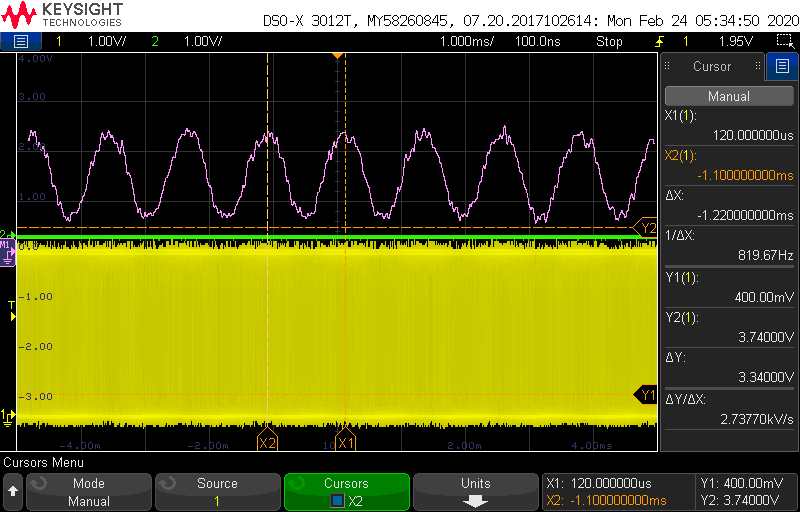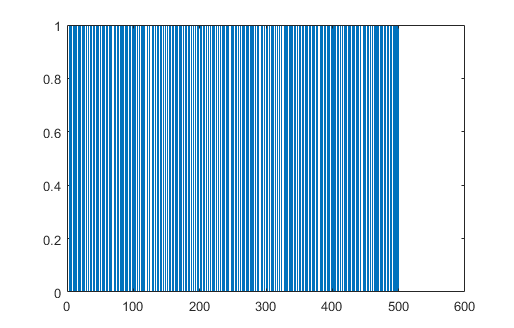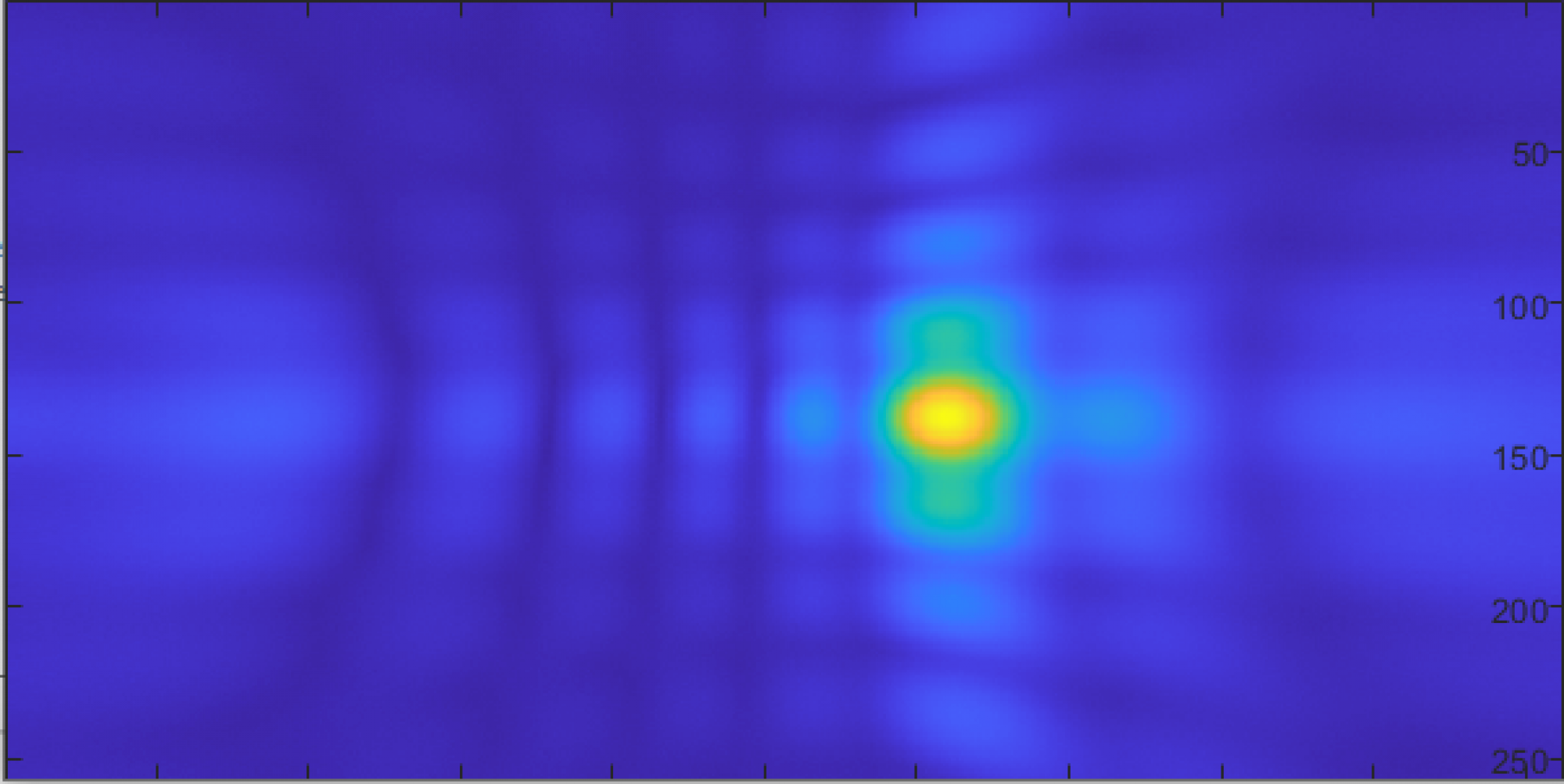This week we focused on our Design Review Presentation. The format was similar to our Proposal Presentation, but this time, we focused on the specifics of the implementation and zeroing in on our metrics and requirements.
We narrowed down on our use case for the Sonic Imager; we’re going to use it to detect air leaks in pneumatic systems. Before, we packaged this as a general purpose audio to image conversion device, but we agreed that having a specific use case would help us focus on achieving metrics related to it, as opposed to being mediocre at everything.
John and I were able to test the basic operation of the PDM microphone. The Teensy 4 was providing a 1MHz clock to the PDM mic, and was receiving the digital output from it. We played an 820Hz tone from my phone, and when we probed the output, we were able to see a pulse density modulated signal. Using the scope’s built in low pass filter, we were able to recover the 820Hz tone: (PDM output in yellow, LPF signal in purple)

I’m currently working on a script to convert the PDM output into PCM audio. I first started writing the script in Python, but I’ve run into issue with signal visualization and plotting on my environment (Ubuntu WSL on Windows and TKInter).
I’ve decided to switch to MATLAB for its versatile graphing options, although it may take more time to write code. I plan to finish the script tomorrow.
Here’s 500 samples (about 0.5ms) of PDM output plotted:

The method of converting PDM to PCM is to create a low pass filter, and MATLAB has a nice library for that.
We are on schedule, and next week I’ll see if there are higher performance and time-efficient filters to speed up processing. CIC filters perhaps?
